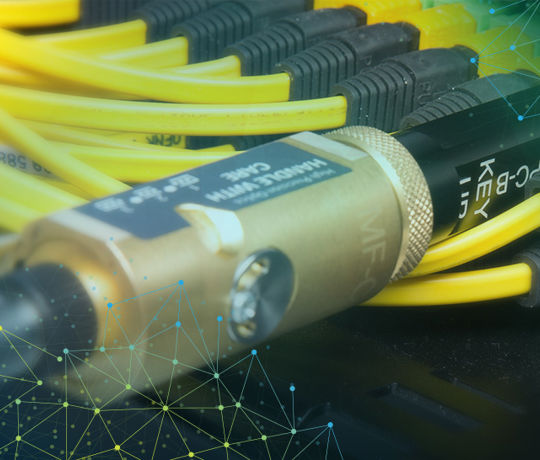Search results
Yes, the wait is over. Following a number of commercial launches, 5G is now here. And, with more launches planned, we are getting close to the 5G promise of exciting new services and innovative business models. Or are we? For many, 5G will not be “truly” 5G (and will not deliver on its promise) without its key differentiating feature: end-to-end network slicing. For others, the argument has more of an evolutionary nature. In other words, 5G needs to start from somewhere and gradually evolve to realize its full potential. Either way, there are challenges for service providers who are deploying or plan to deploy 5G. Some significant challenges have been identified or confirmed in practice during initial rollouts, which have also been a great learning opportunity for the 5G ecosystem. Attend this webinar and learn about: Alternative 5G definitions, and what 5G actually is Current and planned deployments of 5G worldwide Key challenges in deploying 5G The right 5G approach, based also on initial 5G deployments This webinar focuses on the 5G plans and deployments of leading service providers. Main highlights from 5G conference events in June, such as 5G World and Valencia 5G Week, will also be shared. Join us for a lively discussion and take the opportunity to ask questions during the Q&A session at the end of the webinar.
ResourcesWith 5G, more data than ever before—exponentially more—will need to move at faster rates, more reliably and with extremely low latency than previously imagined. With such high expectations, there’s big pressure on the transport network to get 5G transformation done right. So how does that all break down for fronthaul, midhaul and backhaul networks and what are the fundamental technologies required for emerging 5G services? This 2-part webinar series will delve into new requirements and relevant challenges inherent in an evolving transport network, as well as address test parameters to measure critical performance criteria for latency, capacity and throughput. Part 2: 5G best practices: fiber readiness, CPRI/eCPRI fronthaul transport link validation and more! Part 2 of the webinar series will dive into specific 4G and 5G use cases addressing emerging technologies in fronthaul and backhaul networks. We will cover proven testing best practices that ensure transport and radio equipment are properly installed, configured and maintained – while making sure key QoS performance requirements are being met.
ResourcesThis webinar is in German. Der FTTH (Fiber to the Home)-Ausbau in Deutschland ist eines der heißesten Themen der nächsten Jahre. Dies ist bedingt durch den gesteigerten Bandbreitenbedarf der Haushalte, sei es für Smart TVs, Video/OTT-Streaming, Unterstützung von Multi-Screens oder den Betrieb eines Unternehmens. Dieser FTTH-Ausbau bringt neue Herausforderungen und Probleme mit sich, die sich während des Baus, der Aktivierung und der Wartung dieser Netze ergeben. Da der massive Ausbau gerade erst beginnt, wird dieses Webinar die Grundlagen über Glasfaser bis ins Haus erklären. Thematisiert wird auch, welche Herausforderungen Netzbetreiber und Installateure meistern müssen und wir geben Tipps, wie jeder Kleinbetrieb an diesem Rollout teilhaben und vor allem Geld verdienen kann. Achten Sie auf Ihren Posteingang, um weitere Informationen zu den nächsten beiden Webinaren der Reihe zu erhalten. Die weiteren Webinare werden Lösungen für das effiziente Messen im Feld behandeln, einschließlich EXFO's TestFlow und Best Practices zur Fehlerbehebung.
ResourcesThis webinar is in German. Nachdem die Grundlagen des FTTH-Rollouts in Teil 1 behandelt und demonstriert wurden, wie Installateure und Netzbetreiber in Teil 2 von Testautomatisierungs- und Validierungswerkzeugen profitieren können, wird der Teil 3 der Serie die Endkundenaktivierung und Fehlerbehebung behandeln. Es werden typische Probleme bzw. Fehler beleuchtet, die auf der physikalischen und/oder Transportschicht des Netzwerks auftreten können. Desweiteren werden Messgeräte zur Endkundenaktivierung aufzeigt, um die Anschaltung problemlos durchzuführen und eine zweite Ausfahrt zu vermeiden. Die Teilnehmer lernen, wie sie die häufigsten Fehler und Probleme, die während der Lebensdauer eines FTTH-Netzwerks auftreten können, leicht finden können.
ResourcesThis webinar is in German Die unmittelbare Zukunft wird durch ein deutliches Wachstum des FTTH-Ausbaus geprägt sein, wodurch sich die Zahl der Projekte vervielfacht, die Unternehmen vor Ort bauen und testen müssen. Tatsächlich könnte die Rate der FTTH-Ausbauten zwei- bis fünfmal höher sein als die aktuellen Gegebenheiten - ein Anstieg, der die Wachstumsraten in anderen Ländern widerspiegelt. Wie können Telekommunikationsunternehmen die erhöhte Arbeitsbelastung bewältigen, ohne ihre Mitarbeiterzahl deutlich zu erhöhen? Wie können Betreiber Abnahmemessungen bei Neubauten schneller und effizienter durchführen und gleichzeitig den Umsatz steigern? Wie können sie beispielsweise den durchschnittlichen Spleiß validieren, ohne Tausende von Dateien zu durchsuchen? In der zweiten Folge unserer FTTH-Webinarreihe werden wir über einfach anzuwendende Tools und Techniken sprechen, mit denen Betreiber und Installateure die Akzeptanztests zur Fasercharakterisierung vereinfachen können und werden Techniken zur schnellen Überprüfung der Qualität der Ergebnisse und der Dokumentation aufzeigen.
ResourcesDid you know that today’s bandwidth boom (400G rollouts, the advent of 5G or the sprawl of data centers) is mainly driven by integrated photonics? This disruptive technology has been picking up pace over the past few years in telecom applications mainly, but also in medical, sensing or military sectors. Often compared to the groundbreaking electronic processor, photonic integrated circuits (PIC) are similarly imprinted onto wafers before being cut into individual chips. The PIC can combine many functions: purely optical as well as opto-electronical, electro-optical or fully electronic, hence offering the best of optics and electronics. Testing such complex components can be challenging due to their multiple functionalities, the large number of devices being produced per wafer and the mix of active and passive component present on each device. The fundamental characteristic of an optical component is its spectrum (i.e., the power variations from or through the device). Testing it is called parametric testing. This is often performed at an early stage in the life of the component to avoid producing defective devices. In this webinar, we will see how to perform parametric tests on PICs while they are still on wafer. We will also discuss which method is best suited to each type of PIC. Finally, we will see how T&M vendors are addressing this new challenge. Key takeaways: Back to basics: what is parametric testing and why is it important? Challenges faced today by PIC manufacturers and T&M vendors Discover: new solutions to characterize PICs
ResourcesFrom end-to-end network performance and service quality visibility to network virtualization and automated assurance, operational topics have been the focus of many discussions about mobile networks in recent years. But no interesting topic should turn our attention away from flawed management attitudes that have impacted on the performance of 4G network operations teams. If overlooked, these attitudes may also negatively affect the success of 5G. Fortunately, it is possible to identify what should be avoided and to outline the norm in network operations. Attend this webinar and learn about: The essential and evolving role of network operations in 4G/5G Seven detrimental attitudes (sins) that impact on 4G network operations and could also affect 5G Key proven ways (best practices) to enhance mobile network operations today This webinar is based on the EXFO service assurance experience with leading mobile network operators worldwide. Join us for a lively discussion on an exciting topic, and take the opportunity to ask questions during the Q&A session at the end of the webinar.
ResourcesThe big question facing communication service providers today is where to find real opportunities for value creation. While the pressure is on to keep the pace with the latest technical innovations (such as 5G), greater investment in customer experience management might be the key to CSPs successfully establishing themselves as market leaders in customer satisfaction. An increased emphasis on customer experience initiatives will enable operators to grow their subscriber base while minimizing churn and creating a more predictable revenue stream to fund the growth of their business. By offering compelling user experiences where every interaction is personalized, fast and user friendly—and simultaneously providing adapted bespoke offers—operators will be able to differentiate themselves from their competitors by better meeting the needs of their customers. Zain and EXFO will demonstrate how to leverage AI and machine learning to prioritize customer experience and thereby protect and generate revenue streams. To do so, we will examine several compelling use cases addressing the following topics: Data service acceleration – In a highly competitive landscape, Zain Group launched new 4G data services and was eager to achieve greater differentiation to gain market share. Zain called upon the expertise of EXFO to accelerate new service adoption and revenues by ensuring fast access to vibrant digital content and the best quality of experience to its customers. Churn prediction – By using a unique machine learning predictive model, which works with variables from the network on top of traditional CRM variables, it is possible to identify the behaviors of customers, then act accordingly to better serve their needs and retain them. Fraud prediction – Effective investigation of SIM Box fraud protects against significant financial losses and compromised quality of experience for customers. Customer insight and segmentation – The best route to subscriber centers of interests is through the categorization and segmentation of web traffic to increase customer lifetime value. In addition, predictive analytics helps to increase knowledge and understanding of customer behavior so that operators can provide them with optimum offers from which they can derive the most value.
ResourcesThis webinar is in French. Joignez-vous à notre webinaire Web sur les techniques et les tests de construction et de maintenance des infrastructures à respecter pour obtenir des performances optimales. Dans cette séance, vous apprendrez les meilleures pratiques pour tester les fibres optiques, notamment : les tests recommandés pour les câbles multifibres de type MPO; l’inspection des connecteurs; les tests de certification menés à l’aide des OLTS (niveau 1) et des OTDR-iOLM (niveau 2).
ResourcesIn this exclusive webinar, tag along as we share real-world 5G installation scenarios. Get invaluable information about the key challenges and testing considerations to consider when planning your 5G network. Discover strategies that will enable you to accelerate your 5G rollout while maximizing ROI. Join us and become better prepared as you journey to deliver the full promise of 5G. What you will learn: Where are we at with 5G? 5G vs. 4G ecosystem―demystifying 5G technologies and requirements Why installation and maintenance of the fiber optic network is critical for the success of 5G transport 5G testing challenges: how to efficiently manage and maintain 5G rollouts and deliver the stringent QoS performance results required (e.g., timing and synchronization, latency, reliability)
Resources







